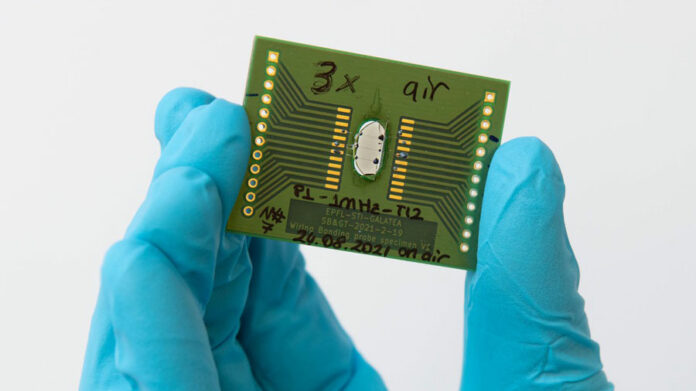EPFL researchers make electricity from glass panes

Researchers at the Swiss Federal Institute of Technology in Lausanne (EPFL) have discovered a possible form of energy generation using specially engraved glass windows. Photoconductive circuits are printed directly onto a glass surface using a femtosecond laser.
Scientists at the Swiss Federal Institute of Technology Lausanne(EPFL) have developed an innovative way of producing photoconductive circuits. These are printed directly onto a glass surface using an ultra-fast femtosecond laser. This new technology is translucent and requires a single material. It could one day be used to generate energy, according to a press release from EPFL.
What happens when tellurite glass is exposed to femtosecond laser light? This is the question that Gözden Torun from the Galatea Laboratory at EPFL, in collaboration with scientists from Tokyo Tech in Japan, was trying to answer in her dissertation when she made a discovery that could one day turn windows into light sensors made from a single material, according to the press release.
By studying how atoms in tellurite glass rearrange themselves when exposed to fast pulses of high-energy femtosecond laser light, scientists discovered the formation of nanoscale crystals of tellurium and tellurium oxide, two semiconductor materials, etched into the glass exactly where the glass had been exposed. An important discovery, a semiconductor material exposed to daylight can generate electricity.
“Since tellurium is a semiconductor, we wondered whether it was possible to print permanent patterns on the surface of tellurite glass that could reliably induce electricity when exposed to light, and it turned out that yes,” Yves Bellouard, director of the Galatea laboratory at EPFL, is quoted as saying. “An interesting aspect of this technique is that no additional materials are needed in this process. All you need is tellurite glass and a femtosecond laser to produce an active photoconductive material.”